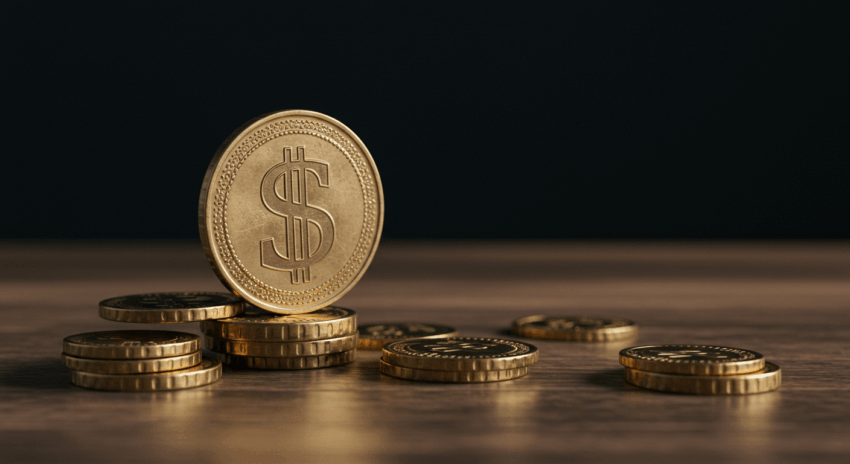The latest US inflation data has just been released, and the numbers are signaling a potential shift in the economic winds that affect everything from your grocery bill to your investment portfolio. For months, rising prices have been a primary concern for households and policymakers alike. But the newest Consumer Price Index (CPI) report offers a glimmer of hope, suggesting that the intense price pressures we’ve experienced might finally be starting to ease. This article will break down what these new figures mean, why they matter, and how they could impact your personal finances in the coming months.
A Welcome Cooldown: Unpacking the Latest Inflation Numbers
The most recent report from the Bureau of Labor Statistics revealed that the Consumer Price Index (CPI), the most widely watched measure of inflation, rose at a slower pace than economists had predicted. On a year-over-year basis, prices increased by 3.1%, a noticeable deceleration from the 3.4% figure seen in the previous month. This is a significant development because it marks a continued trend downwards from the multi-decade highs we saw not too long ago.
But to truly understand the economic picture, we need to look beyond the headline number. Economists pay close attention to what’s known as “core” inflation. So, what’s the difference?
- Headline CPI: This is the all-inclusive number you usually hear about in the news. It measures the average price change for a whole basket of goods and services, including a few notoriously volatile items.
- Core CPI: This metric takes that same basket but removes food and energy prices. Why? Because gas prices can swing wildly due to global politics, and food costs can be affected by weather events, things that don’t necessarily reflect the underlying health of the economy. Core CPI gives a clearer signal of the more persistent inflation trends.
The good news is that core inflation also showed signs of moderation, rising by 3.8% annually, its slowest increase in nearly two years. This suggests the cooling trend isn’t just because of a temporary drop in gas prices but may be more broad-based.
What’s Driving the Slowdown in Prices?
So, what’s behind this welcome relief? A deeper dive into the report shows the slowdown was driven by several key areas. The most significant factor was a continued decline in energy costs, with gasoline prices falling for the second consecutive month. This is something every driver has likely felt at the pump.
Furthermore, the prices of used cars and trucks, which were a major driver of the inflation spike during the pandemic, have continued their downward trend. The global supply chain issues that made new and used vehicles so expensive have largely been resolved, bringing more balance to the market.
However, not all news was positive. The cost of shelter—which includes rent and an equivalent for homeowners—remains stubbornly high and is now the single largest contributor to inflation. This is a critical area to watch, as housing costs make up a large portion of the average person’s budget. Until we see a significant cooling in the housing and rental markets, the path back to low, stable inflation will remain a challenge.

The Ripple Effect: What This Means for You and the Federal Reserve
This single economic report has far-reaching consequences. Its most important audience is arguably the Federal Reserve, the U.S. central bank tasked with maintaining price stability. The Fed’s primary tool to fight high inflation has been to raise interest rates, making it more expensive to borrow money for cars, homes, and business expansions. The goal is to cool down demand and give supply a chance to catch up.
This new data, showing that inflation is moving in the right direction, makes it much less likely that the Fed will need to raise interest rates again. In fact, it shifts the conversation towards when the central bank might begin to cut rates. Lower interest rates would eventually translate into:
- Cheaper Mortgages and Loans: A reduction in the Fed’s benchmark rate would lead to lower interest rates on new mortgages, car loans, and personal loans, making big-ticket purchases more affordable.
- Lower Credit Card APRs: The interest rates on credit card debt are often tied directly to the Fed’s rates, so a cut could provide relief to those carrying a balance.
- A Boost for the Stock Market: Lower rates are typically good for the stock market. They reduce borrowing costs for companies, which can boost profits, and they make stocks look more attractive compared to safer assets like bonds. This could be a pivotal moment for your long-term investment strategy.
For your day-to-day life, this report is a sign that the squeeze on your budget might be lessening. While prices are not falling overall (that would be deflation, a different and often more dangerous problem), the rate at which they are increasing is slowing down. This means your paycheck should be able to stretch a little further than it did a few months ago, potentially freeing up more cash for your savings goals.
The Road Ahead: Cautious Optimism
While this report is certainly positive news, economists and policymakers remain cautiously optimistic. One month of good data does not guarantee a trend. The Federal Reserve has been clear that it needs to see several months of sustained progress before it will be confident that inflation is truly under control and on its way back to the 2% target.
The persistence of high shelter costs remains a key obstacle. Furthermore, the strong labor market, while great for workers, could continue to put upward pressure on wages and, consequently, prices for services. The path forward will require a delicate balancing act. The goal is to bring inflation down without slowing the economy so much that it triggers a recession.
In conclusion, the latest inflation numbers provide a strong signal that the worst of the price surge is likely behind us. It’s a crucial piece of evidence that the Fed’s policies are working and offers hope for more affordable borrowing and better financial stability in the near future. Consumers, investors, and businesses will all be watching the next few reports closely to see if this encouraging trend continues.
Frequently Asked Questions (FAQ)
Why is 2% the target for inflation? Why not 0%?
Central banks like the Federal Reserve aim for a small, positive level of inflation (around 2%) rather than zero for a few key reasons. Firstly, it provides a buffer against deflation, a period of falling prices, which can be very damaging to an economy. When people expect prices to fall, they delay purchases, causing demand to plummet and potentially leading to a recession. Secondly, a little bit of inflation makes it easier for wages and prices to adjust. In a 0% inflation environment, the only way for a company to adjust real labor costs is to cut nominal wages, which is difficult and bad for morale. A small amount of inflation allows real wages to adjust more smoothly over time.
Does this cooling inflation report mean prices are going to go down?
This is a common and important question. No, cooling inflation—also known as disinflation—does not mean that overall prices are falling. It simply means that prices are increasing at a slower rate than before. For example, if inflation goes from 4% to 3%, a basket of goods that cost $100 last year and costs $104 this year would be projected to cost around $107 next year (a $3 increase) instead of $108 (a $4 increase). Prices are still rising, just not as quickly. For prices to actually drop, we would need to experience deflation, which is a negative inflation rate.



